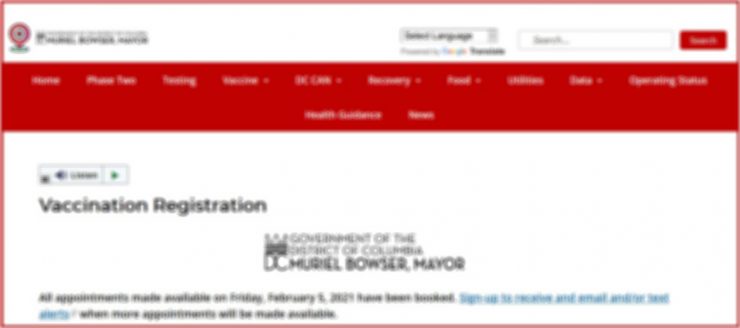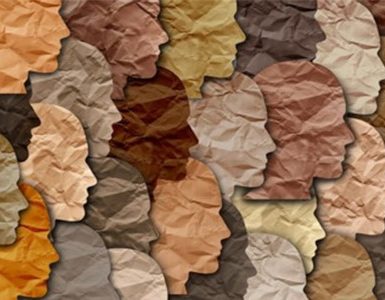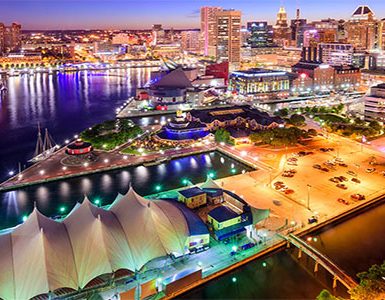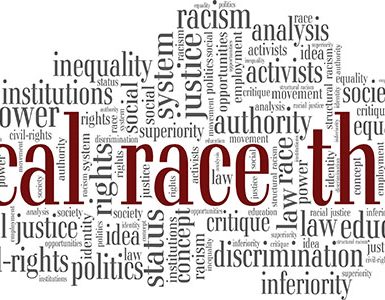It’s been more than a year since the COVID-19 pandemic began, yet the evolving nature of the global crisis remains a challenge to public health officials and citizens to this day. At this point, science suggests that the most common measures initiated in response to the pandemic virus—social distancing, hand washing, and widespread mask use—are among the best tools for slowing the spread.
The world also recently received a new and highly anticipated tool in the fight against the novel coronavirus: vaccines.
Fast-tracked under the auspices of an Emergency Use Authorization (EUA) by the FDA, the COVID-19 vaccines from pharmaceutical companies Pfizer-BioNTech and Moderna have been approved and recommended for use. (Additional vaccines are in the works from AstraZeneca, Janssen, and Novavax.) Since mid-December 2020, widespread vaccine rollouts have been ongoing in nations around the world.
As required by the Centers for Disease Control and Prevention (CDC), the District of Columbia submitted its interim vaccine rollout plan in October 2020. These are living documents that continue to be updated, and allow for real-time exploration of how the District has approached the vaccination rollout.
What’s Happening With the COVID Vaccine Rollout in DC
Under the guidance of the CDC, Washington D.C. subdivided its COVID vaccine program into several key phases or tiers. These phases provide the necessary logistical scaffolding to ensure critical populations receive their vaccinations first, and that the health and safety of all DC residents, visitors, and workers are optimized.
The following populations will be eligible to receive their vaccines, pending the current phase:
- Phase 1A: long-term care residents, healthcare personnel, frontline public health workers, and first responders (fire and emergency medical)
- Phase 1B Tier 1: all prior eligible individuals, as well as DC residents aged 65 and up, residents of congregate settings (homeless shelters, group homes, community residential and intermediate care facilities), correctional officers, congregate setting staff members, and non-healthcare personnel supporting the operations of COVID vaccine clinics
- Phase 1B Tier 2: all prior eligible individuals, as well as individuals in detention centers and correctional facilities, law enforcement and public safety officers, all staff working in K-12 educational facilities, grocery store employees, and all staff working in child care facilities
- Phase 1B Tier 3: all prior eligible individuals, as well as staff working in courts, individuals providing legal services, individuals working in health, human services, and/or social services outreach programs, frontline employees of public mass transit, US Postal Service employees, and employees in manufacturing and food packaging and distribution
- Phase 1C Tier 1: all prior eligible individuals, as well as DC residents aged 16-64+ with chronic medical conditions that increase the risk of complications from COVID-19, individuals working in commercial and residential property maintenance and environmental services, and essential employees of local government agencies (who cannot execute their job remotely/via telework), public utilities, and non-governmental health human, and social services organizations or agencies
- Phase 1C Tier 2: all prior eligible individuals, as well as essential employees working in media and mass communications and individuals working in non-public transit transportation services (e.g., ride share) and logistics/delivery/courier services
- Phase 1C Tier 3: all prior eligible individuals, as well as individuals working in construction and commercial and residential property management, and all essential employees working in information technology, federal government agencies, adn institutions of higher education (e.g., colleges, universities, and trade schools)
- Phase 2: all prior eligible individuals, as well as all DC residents aged 16+ not included in previous phases
According to the New York Times, roughly 11 percent of the DC population has received at least one dose of the COVID vaccine as of February 9, 2021. Unlike many other cities following the model of administering as many first doses as possible, DC is administering the second dose for eligible residents as the phases continue. In an interview with Washington City Paper, interim principal deputy director for DC Health Dr. Ankoor Shah has said this is an intentional approach intended to “[preserve] societal function,” although prioritizing the prevention of morbidity and mortality remains high, as well.
In total, nearly 67,688 doses of the COVID vaccine have been administered in the capital as of the first week of February, representing nearly 72 percent of doses made available so far. DC residents can sign up to receive a text or email alerts about when more vaccine appointments are available.
Current Vaccine Challenges in DC
One challenge of the vaccine rollout largely unique to DC is the large preponderance of people who live in another state but work in the District as healthcare workers or critical infrastructure personnel. For this reason, DC public health officials have called for DC’s COVID-19 vaccine allotment from the federal government to be based on the workforce population and not merely the residency population.
As it is, however, “[current] demand for the vaccine in DC is much higher than the supply we are receiving,” says an official release from DC Mayor Bowser. Insufficient supply can lead to canceled or delayed doses, and could partially explain why some media outlets report that the DC region is underperforming in its vaccine rollout.
Ensuring equal access to COVID vaccines also appears to be a challenge in DC, particularly in a pandemic that has brought racial and socioeconomic disparities to light. According to Mayor Bowser’s website, as of January 28, 2021 there were 17,520 white DC residents partially or completely vaccinated, compared to just 9,967 black DC residents (along with 23,551 residents of other races). Yet latest demographic data for the District indicate that white and black residents make up about 42.3 percent and 43.9 percent of DC’s population, respectively.
It could be that white people make up a larger percentage of the non-DC resident workforce meeting the eligibility requirements, which might be skewing the vaccination data by race. Even so, and to ensure equitable access to vaccines and up-to-date information about the vaccines, DC is relying on outreach programs like community-based organizations and faith organizations to help spread the word to the different wards.
Lastly, the limited resources faced by certain community members in the District’s wards present a major challenge to scheduling and making vaccine appointments. In response, the District’s Medicaid Managed Care Organizations (MCOs) offers free transportation for all medically necessary covered services and appointments. As the vaccine rollout continues to evolve, residents are encouraged to look out for additional resources.


















Add comment